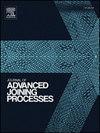Comparative evaluation of conventional friction stir welding and ultrasonic vibration-assisted friction stir welding techniques
IF 4
Q2 MATERIALS SCIENCE, MULTIDISCIPLINARY
引用次数: 0
Abstract
Enhancing joint strength in aluminium alloys remains a critical challenge for industrial applications. Friction stir welding (FSW) is a solid-state welding process that offers superior weld quality compared to fusion methods. However, further advancements are needed, particularly for high-performance alloys like third-generation Al-Li. To address this, ultrasonic vibration-assisted FSW (UVaFSW) has been explored as a potential enhancement. This study compares the mechanical and microstructural properties of AA2060-T8-E30 joints produced by FSW and UVaFSW. Key process parameters, including tool traverse speed and ultrasonic vibration amplitude (7.5 µm and 22.5 µm), were varied to assess their influence on weld quality. Mechanical performance was evaluated through tensile testing and Vickers microhardness, while microstructural characteristics were examined using optical microscopy and SEM. The results demonstrated that UVaFSW significantly improved material flow, reduced asymmetry in the thermo-mechanically affected zone (TMAZ), and refined the grain structure. Consequently, the ultimate tensile strength increased by 16.6 % and 31.8 % at 7.5 µm and 22.5 µm amplitudes, respectively, and elongation reached 11 %, nearly three times that of FSW. Furthermore, UVaFSW produced finer grains and more uniform precipitate distribution. Therefore, UVaFSW emerges as a promising technique for enhancing weld quality in advanced Al-Li alloys for demanding engineering applications.
传统搅拌摩擦焊与超声振动辅助搅拌摩擦焊技术的对比评价
提高铝合金的接头强度仍然是工业应用的关键挑战。搅拌摩擦焊(FSW)是一种固态焊接工艺,与熔合方法相比,它提供了更好的焊接质量。然而,需要进一步的进步,特别是像第三代铝锂合金这样的高性能合金。为了解决这个问题,超声波振动辅助FSW (UVaFSW)作为一种潜在的增强技术被探索。本研究比较了FSW和UVaFSW制备的AA2060-T8-E30接头的力学性能和显微组织性能。改变关键工艺参数,包括刀具横移速度和超声振幅(7.5µm和22.5µm),以评估它们对焊接质量的影响。通过拉伸测试和维氏显微硬度评估其力学性能,并通过光学显微镜和扫描电镜检查其显微组织特征。结果表明,UVaFSW显著改善了材料流动,减少了热机械影响区(TMAZ)的不对称性,并细化了晶粒结构。在7.5µm和22.5µm幅值下,拉伸强度分别提高了16.6%和31.8%,伸长率达到11%,几乎是FSW的3倍。此外,UVaFSW产生更细的晶粒和更均匀的沉淀分布。因此,UVaFSW成为一种很有前途的技术,可以提高高要求工程应用中先进铝锂合金的焊接质量。
本文章由计算机程序翻译,如有差异,请以英文原文为准。
求助全文
约1分钟内获得全文
求助全文

 求助内容:
求助内容: 应助结果提醒方式:
应助结果提醒方式:


